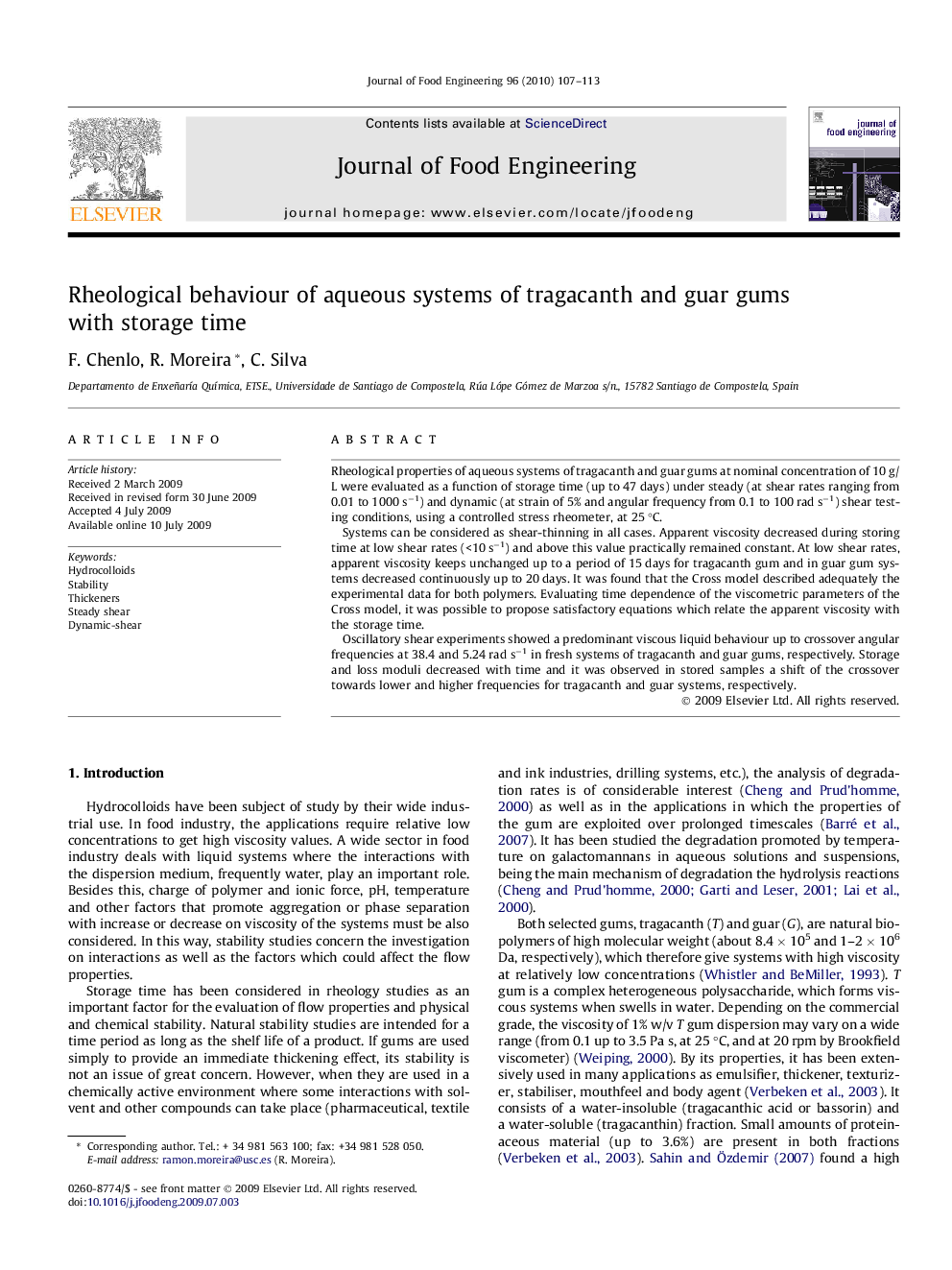| Article ID | Journal | Published Year | Pages | File Type |
|---|---|---|---|---|
| 224454 | Journal of Food Engineering | 2010 | 7 Pages |
Rheological properties of aqueous systems of tragacanth and guar gums at nominal concentration of 10 g/L were evaluated as a function of storage time (up to 47 days) under steady (at shear rates ranging from 0.01 to 1000 s−1) and dynamic (at strain of 5% and angular frequency from 0.1 to 100 rad s−1) shear testing conditions, using a controlled stress rheometer, at 25 °C.Systems can be considered as shear-thinning in all cases. Apparent viscosity decreased during storing time at low shear rates (<10 s−1) and above this value practically remained constant. At low shear rates, apparent viscosity keeps unchanged up to a period of 15 days for tragacanth gum and in guar gum systems decreased continuously up to 20 days. It was found that the Cross model described adequately the experimental data for both polymers. Evaluating time dependence of the viscometric parameters of the Cross model, it was possible to propose satisfactory equations which relate the apparent viscosity with the storage time.Oscillatory shear experiments showed a predominant viscous liquid behaviour up to crossover angular frequencies at 38.4 and 5.24 rad s−1 in fresh systems of tragacanth and guar gums, respectively. Storage and loss moduli decreased with time and it was observed in stored samples a shift of the crossover towards lower and higher frequencies for tragacanth and guar systems, respectively.
